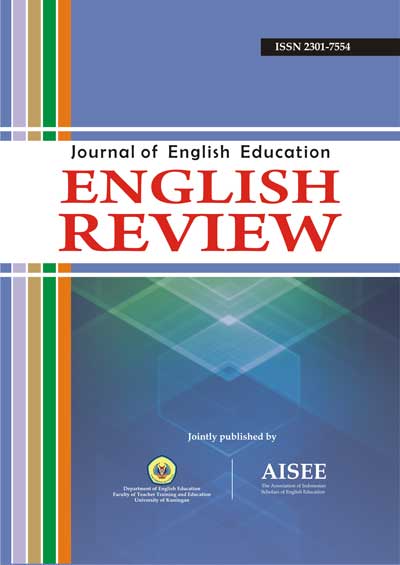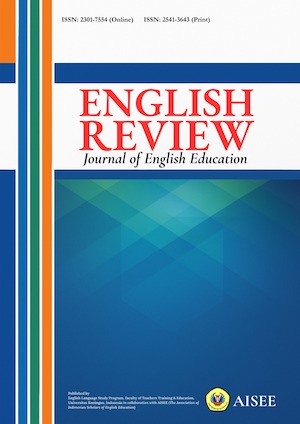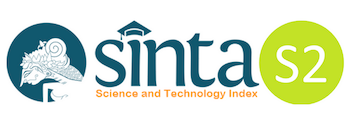IMPROVING STUDENTS’ LISTENING SKILL BY USING ENGLISH SONGS
Abstract
Abstract: This study investigates students’ listening skill by using English songs. The reason of choosing this topic is based on the problems that is listening skill. It can be seen during the writer teaching at SMPN in Kuningan, the students lack of listening skill. The aims of this research were to investigate the effectiveness of using English songs to improve students listening skill and to know the students attitudes of using English songs in listening skill.The target of this research was the students at eighth grade of SMPN 1 Lebakwangi, Kecamatan Lebakwangi. There were 62 students. The method of this research was quasi-experimental design. There are two groups as the investigated group in this research. One group is for experimental group and the other group is controlled group. The data were collected through three steps, namely pre-test, post-test, and questionnaire. To analyze the result of pre test and post test, this research used t-test formula computed by SPSS 17.00. The result of the research showed that the students’ progress in mastering listening skill during the activity can be seen from the Paired test that shows t count is higher than t table (-32.697>2.042). It indicates that English songs is effective in listening skill. Students given positive attitude based on the questionnaire result that it had level agreement 92% and mean 142.
Keywords: listening skill, song, media, language skill
References
Brown, H. D. (2001). Teaching by principles an interactive approach to language pedagogy. White Plains: Addison Wesley Longman, Inc.
Creswell, J. W. (2009). Research design: Qualitative, quantitative, and mixed method approachers. Thousand Oaks, CA: SAGE Publications.
Harmer, J. (2001). The practice of English language teaching. London: Longman.
Hidayat, A. (2013). The use of songs in teaching students’ listening ability. Journal of English and Education 1 (1) 21-29.
Kline, J. A. (1996). Listening effectively. Alabama: Air University Press.
Lynch, L. M. (2008). Using popular songs to improve language listening comprehension skills. Retrieved from http://esl4free.blogspot.com/2008/02/can-music-improve-your-students.htm
Murcia, M. C. (2001). Teaching English as a second or foreign language. Boston: Heinle & Heinle Thomson Learning.
Ocak. (2012). Developing young learners’ listening skill through song. Kastamonu Education Journal. 20 (1) 327-340.
Pinter, A. (2006). Teaching young language learner. New York: Oxford University Press.
Priyatno, D. (2010). Paham analisa statistik data dengan SPSS. Yogyakarta: MediaKom.
Shen, C. (2009). Using English songs: An enjoyable and effective approach to ELT. CCSE Journal English Language Teaching 2(1) 88- 94.
All articles published in English Review: Journal of English Education (ERJEE) are licensed under the Creative Commons Attribution 4.0 International License (CC BY 4.0).
Copyright Ownership
Authors retain the copyright of their articles and grant ERJEE the right of first publication. The journal is granted a non-exclusive license to publish, reproduce, and distribute the article in any format, medium, or platform, provided that proper credit is given to the original authors.
License Terms – CC BY 4.0
Under the Creative Commons Attribution 4.0 International License, others are free to:
- Share — copy and redistribute the material in any medium or format
- Adapt — remix, transform, and build upon the material for any purpose, even commercially
As long as they:
- Provide appropriate credit to the original author(s) and source
- Provide a link to the license (https://creativecommons.org/licenses/by/4.0/)
- Indicate if any changes were made
There are no restrictions on the reuse, reproduction, or adaptation of published articles as long as attribution is properly given.
Author Warranties
By submitting a manuscript to ERJEE, authors confirm that:
- The work is original and does not infringe any existing copyright.
- The manuscript has not been previously published and is not under consideration elsewhere.
- All sources and references are appropriately acknowledged.
- Necessary permissions have been obtained for any copyrighted materials used.










